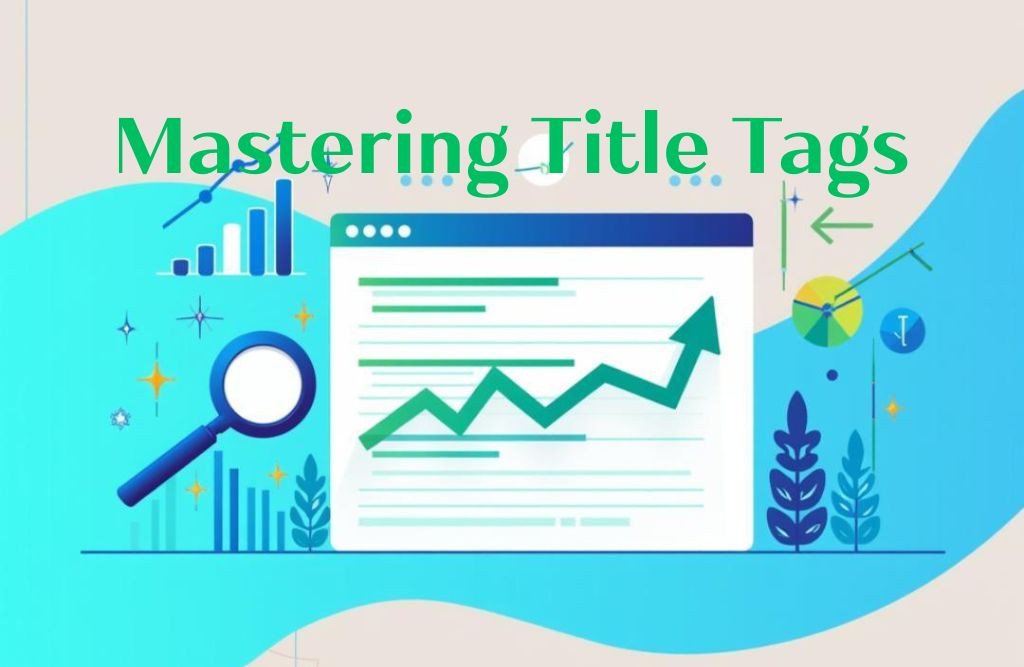
-
May 13, 2025
How to Write Compelling Title Tags That Drive Clicks and Rankings
Title tags are one of the most important on-page SEO elements — yet they’re often overlooked. A compelling title tag not only helps your page rank higher in search engines but also plays a key role in improving click-through rates (CTR) from the search engine results page (SERP). In this blog post, we’ll explore how to craft title tags that attract both search engines and real users.
What is a Title Tag?
A title tag is an HTML element that specifies the title of a web page. It appears in three main places:
- On search engine results pages (as the clickable headline)
- In browser tabs
- When someone shares the page on social media (often used as the preview text)
Google and other search engines use title tags to understand the content of a page. Users see them and decide whether to click on the link. That makes your title tag a powerful combination of SEO and marketing.
Why Title Tags Matter for SEO
-
Improves Search Engine Rankings: Search engines use title tags as a ranking signal. Including relevant keywords helps Google understand the context of your content.
- Boosts Click-Through Rates: An eye-catching title can significantly increase the number of people who click on your link.
- Enhances User Experience: A descriptive title tells users what they can expect, reducing bounce rates and increasing engagement.
Best Practices for Writing SEO-Friendly Title Tags
1. Keep It Under 60 Characters
Google typically displays the first 50–60 characters of a title tag. Anything longer might get cut off, which could affect your click-through rate. Aim to keep your title concise yet informative.
Example:
✅ How to Start a Blog in 2025: A Step-by-Step Guide
❌ How to Start a Blog in 2025: A Comprehensive, Detailed, and Long-Winded Tutorial for Beginners
2. Use Primary Keywords Naturally
Include your primary keyword near the beginning of the title tag. This helps both search engines and users quickly understand what the page is about.
Example:
✅ SEO Audit Checklist: Improve Your Rankings Fast
❌ Tips to Get Better Rankings Using an SEO Audit Checklist
3. Add Power Words to Spark Curiosity
Power words trigger emotion and curiosity. Words like “Ultimate,” “Proven,” “Secret,” and “Essential” can encourage more clicks.
Example:
✅ The Ultimate Guide to Email Marketing That Converts
❌ Basic Email Marketing Tips for Beginners
4. Include Your Brand Name (When Relevant)
If you're building brand authority or your name is well-known, consider adding your brand name at the end of the title.
Example:
Best Social Media Tools for 2025 | Trendy Spire Media
This works well for homepage or branded content but isn't necessary for every blog post.
5. Match Search Intent
Understand the intent behind the keywords. Are users looking for information, a product, or a comparison? Match your title to what they’re actually searching for.
Example:
If the keyword is “best DSLR cameras for beginners,” your title could be:
7 Best DSLR Cameras for Beginners in 2025 (Expert Reviews)
6. Use Numbers and Lists
Numbers make titles more scannable and specific. They also promise a structured reading experience.
Example:
✅ 10 Proven Ways to Grow Your Instagram Followers Fast
❌ How to Get More Instagram Followers
7. Avoid Keyword Stuffing
Stuffing keywords makes your title look spammy and unreadable. Focus on making it human-friendly and relevant.
Bad Example:
SEO SEO SEO Tips for SEO Success in SEO
Good Example:
Top SEO Tips to Rank Higher in 2025
Tools to Help Write Better Title Tags
-
Google SERP Snippet Tool – Preview how your title tag will appear.
- Co Schedule Headline Analyzer – Score your title’s emotional impact and clarity.
- Ahrefs / SEMrush – See how competitors are using keywords in their title tags.
Final Thoughts
Your title tag is your first impression in the SERPs — make it count. A compelling title tag balances SEO keywords, clarity, and click-worthy appeal. By following the best practices outlined above, you can drive more organic traffic to your website and improve your visibility in search engines.
So next time you publish content, don’t treat the title tag as an afterthought. Instead, craft it carefully and test different versions to find what resonates most with your audience.
Need Help with SEO?
At Trendy Digital Academy, we specialize in SEO strategies that drive results. From keyword research to on-page optimization, our team can help you rank higher and grow faster. Contact us today!
